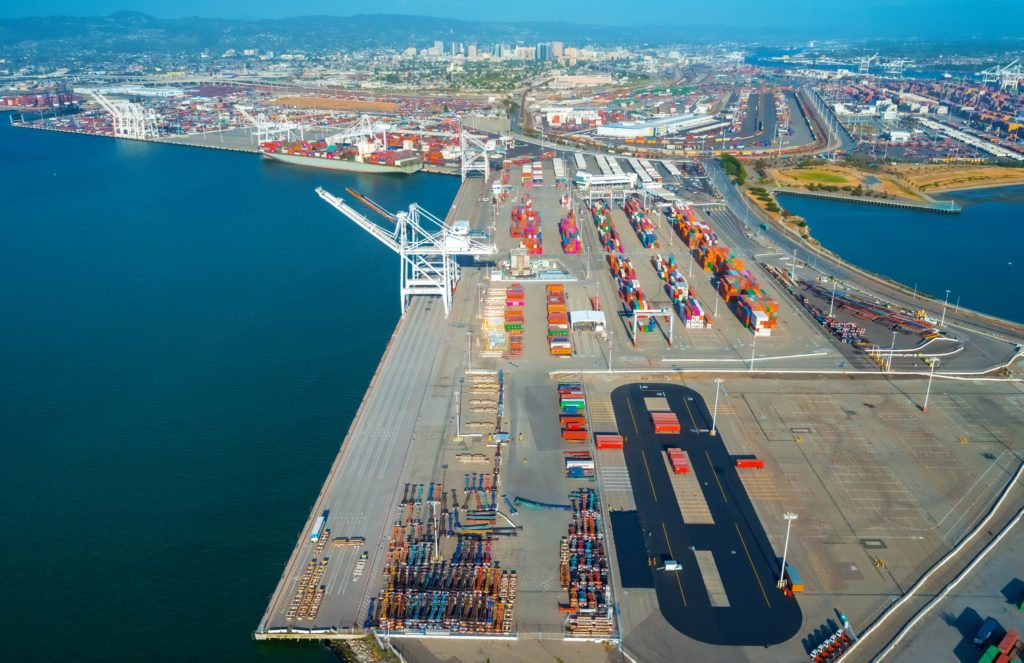Reviewed Work: “The Billion-Dollar Coal Bailout Nobody is Talking About: Self-Committing in Power Markets”
Imagine that you have experienced one too many power outages. You could buy a diesel generator, maybe some solar panels as well. With enough diesel supply, you could power your energy needs non-stop. But of course you don’t do these things because it’s almost always cheaper to buy electricity from the grid. And, as an economically rational actor, that is what you do.
The economic calculation is not so different on a larger scale. And, with respect to larger power plants, there are a growing number that it might be more economical simply to switch off. Yet their owners—ostensibly far more sophisticated economists than a random person with a generator—nevertheless go to great lengths to ensure they are kept on and running, despite the economic loss. Or at least this is what Joe Daniel of the Union of Concerned Scientists argues in an extended interview in Forbes, which was built off of work he began while at Sierra Club, and has continued at UCS.
In particular, Daniel takes issue with the fact that utilities are too often “self-scheduling.” Typically, in wholesale power markets, when power plants participate in an auction, their bid represents their cost to operate. The most expensive unit necessary to keep the lights on sets the market price of electricity, while all higher-cost bids are rejected. This ensures that a utility that owns a power plant can be substituted by another, less-expensive one to serve that utility’s customer. This economic substitution drives a substantial amount of the value of wholesale power markets, which replaced a system wherein utilities were more isolated and had to rely more heavily on their own internal operations to keep things working. However, when utilities “self-schedule” their power plants, they schedule them as “must-take” resources, regardless of a power auction’s outcome. In other words, they remove the possibility that they will be replaced by more economical alternatives. (As a practical matter, “self-scheduling” can also occur when a utility offers its production into a wholesale market’s auction at a bid of $0 or less.) According to Daniel, this type of activity is not merely uneconomic behavior—it’s tantamount to a bailout for coal.
To be sure, he is right that it costs something to fuel those power plants. In order to figure out what that cost is, Daniel’s analysis does the associated math as a division problem, wherein the quotient that results from the total fuel cost divided by the megawatt-hours produced is compared to prevailing market prices for power. (He also makes an allowance for operations and maintenance costs that rise and fall with production.) If the apparent fuel cost is above the market price, he deems the plant’s bidding behavior economically irrational, and his analysis calculates the plant’s losses on that basis.
However, to calculate this way misses an important fact, which is that coal plant owners usually do not agree to pay for fuel merely a day ahead of time. Instead, they typically sign longer-term contracts with mines that obligate them to buy a specified minimum of quantity. These “take or pay” contracts mean that, as a practical matter, the power plants will carry some fuel costs—even if the plant does not run. An even more onerous version of such a contract is referred to as “take and pay,” in which power plant owners are required to take physical delivery of coal, and since they cannot store increasing quantities indefinitely, are forced to burn it—even at an apparent loss.
While Daniel is correct in his premise that utilities should offer their power plants into the market at a price that reflects the costs they would avoid if they did not operate, in a “take or pay” contract, this results in an economically rational offer close to $0—not a price equal to the average cost of a ton of coal over the life of the contract. Interestingly, wind farms have a related economic incentive. They forego the production tax credit that they would otherwise earn if they fail to produce. Therefore, rather than bidding their apparent fuel cost, which for wind really is $0, tax credit-eligible wind farms are profitable at negative prices in power markets, down to the inverse of the value of their tax credit (currently $24 per megawatt-hour). Accordingly, during such times, it would be economically irrational if wind did not pay consumers to take their power. In light of this, a promising future avenue of research would investigate what can be done to wean the industry off certain commercial practices and public policies that are poorly aligned with the economics of electricity.
It should also be noted that “take or pay” contracts are not new, but the last time they were controversial in the energy sector, the object of contention was natural gas rather than coal. Throughout the 1980s, pipelines and counterparty gas producers utilized them to lock in high prices at fixed quantities. As a result, when gas prices fell, the pipelines and their downstream consumers were locked into substantial liabilities, and American consumers risked losing out on the economic benefits of the first natural gas-production revolution. A running legal battle between producers and consumers ensued, and ended with FERC Order 500, which was upheld by the Supreme Court in Mobil Oil Exploration v. United Distribution Co. (1991). Put simply, the order’s goal was to spread the cost of out-of-market liabilities to both producers and consumers. And, along the way, FERC accomplished the restructuring and open access of the natural gas market that exists today.
To the degree that “take or pay” contracts are uneconomical over a period, power plant owners should be motivated in the eventual contract renegotiation to change their terms or even to reopen the contract to early renegotiation. Likely contractual remedies include eliminating “take or pay” language, accepting it only for certain seasons of operations or to “take or pay” a lower quantity. Utilities should enjoy the upper hand. After all, there are plenty of alternatives to provide customers electricity other than a coal plant. Meanwhile, coal mines have only power plants as potential customers. This means that the threat of a plant shutdown for those that appear uneconomical can be a big motivator for mines to accept revised contract terms.
However, it is also worth asking whether utilities that own coal plants are properly motivated to seek these efficiencies. Certainly their counterparties, the coal producers—ever on the verge of insolvency—are motivated by their bottom line. But regulated utilities enjoy “fuel and purchased power” adjustment clauses, referred to as “trackers.” This regulatory mechanism is sometimes required by state law; elsewhere, it is adopted through administrative rule or order by state public utility commissions. A “tracker” allows a utility to change its rates to fully pass through any incremental or decremental cost of coal (and other fuels) onto consumers, usually on an annual or monthly basis. This departs from typical utility ratemaking, wherein a utility’s budget for fuel is built into the rates it is permitted to charge, but the rate is not automatically adjusted each time the cost of fuel goes up or down. Today, without exception, each state with regulated generation has a tracker for fuel costs. However, these mechanisms have one huge problem: By eliminating a utility’s opportunity to earn additional profit (or incur a loss) on fuel, the utility is deprived of a financial incentive to improve their fuel-contracting behavior.
This is exactly the precondition that led to the natural gas imbroglios described above. There, pipelines earned no profit (and incurred no loss) on the gas supplies they transported. The cost, however high, was simply passed through to the gas utilities. Unsurprisingly, those pipelines did not make for especially good representatives of their downstream customers when it came to cutting a hard bargain with gas producers.
As a remedy to “self-scheduling,” Daniel appears to propose that utility commissions should conduct investigations and disallow any costs that have been imprudently incurred. And while this might sound reasonable in theory, in practice it is easier said than done. To invite a regulator to judge whether a utility should have signed a particular fuel contract is a hopeless task in retrospection. It gives the regulated utility an opportunity to bamboozle the regulator, because only the utility can know the mentality its principals possessed as they contracted for fuel. Such an ad hoc approach isn’t workable in practice, as regulators should be focused on a utility’s efficiency across its entire portfolio. In any event, they should not be in a position to play armchair-quarterback for individual fuel contracts.
Happily, there is a better way. It involves reforming the “trackers” that cause utilities to be fully indifferent to their power-supply costs. Instead, trackers should incorporate cost-sharing. The basic design is fairly straightforward. First, the regulator sets a rate that reflects anticipated costs over a certain interval. When actual costs deviate (as inevitably they will), both shareholders and consumers share in the added costs or profits of that deviation. This approach motivates the utility toward efficiency in any given fuel supply issue—including its coal contracts. It also allows the regulator to put away the microscope and align the incentives of the utility with its customers’ interests to minimize their power costs. Indeed, this spin on a tracker has already been successfully adopted in several jurisdictions in the Pacific Northwest, though it is regrettably still not commonplace nor is it as amplified an incentive as it should be.
Although Joe Daniel’s work points to a real problem, the problem is broader than even he observes: Too many utilities still do not have any meaningful incentive to operate efficiently in power markets or in their fuel supply negotiations. And, as the history of natural-gas pipelines demonstrates, it’s not just a coal issue—even if the problem is most visible in coal today. Indeed, it extends even to renewable energy. And, as the supply of weather-dependent clean energy grows, a reformed tracker would incentivize utilities to make sure their portfolios are advantageous relative to the wider market, wherein all utilities in wind- or solar-rich regions can have big surpluses or shortfalls of energy all at once. At any rate, all utilities should face the consequences of power-supply outcomes that are inefficient. Or, put another way, they should at least have incentives to make those outcomes better.




